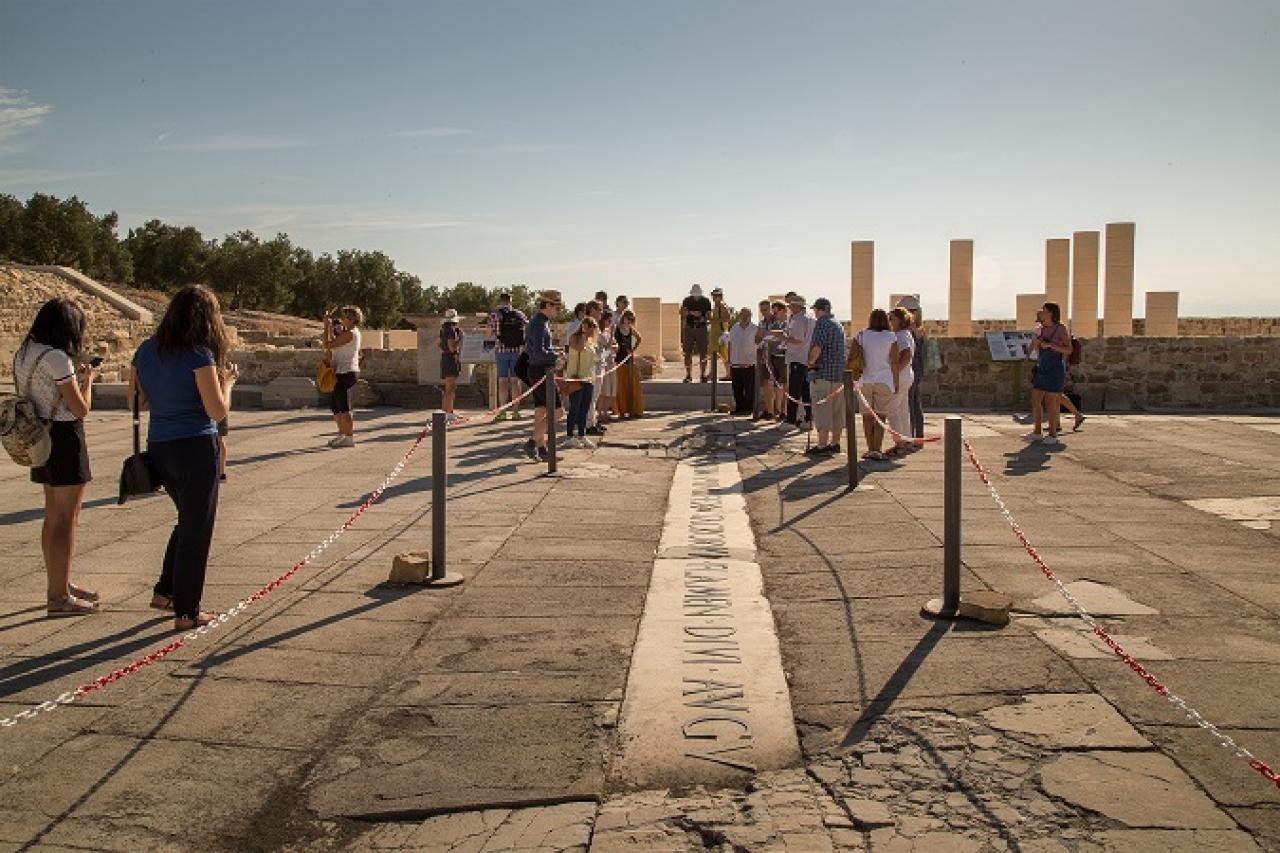
Article by the network Lead Expert Pedro Soutinho.
“A Historic Urban Landscape or HUL is an urban area understood as the result of a historic layering of cultural and natural values and attributes, extending beyond the notion of “historic centre” or “ensemble” to include the broader urban context and its geographical setting’. It builds upon the assumption that, when an urban settlement is properly managed, initiatives, opportunities, and development can contribute to both quality of life and conservation of cultural heritage, while ensuring a social diversity and justness.» (in UNESCO Recommendation on the Historic Urban Landscape).
This concept laid down by UNESCO could be in any strategic plans of the cities participating in the INT-HERIT Implementation Network. Until recently, traditional urban conservation practices focused primarily, or sometimes exclusively, on the architectural monuments of the city. Nowadays, however, there is a broad recognition that a more inclusive and comprehensive approach is needed to identify and understand the urban values, which are at the heart of the identity and character of the city. In fact, cities participating in the INT-HERIT Implementation Network are already aware of the limitations of traditional policies towards cultural heritage whose main focus was on the rehabilitation of buildings while their use and valorisation was left to the final pages of the project dossier leading to a low impact of these projects in the city quality of life. Today every one acknowledges that this is not enough to really make noticeable changes in the city. Conservation of cultural heritage is therefore regarded as an economic opportunity to foster social and economic development. This is particularly true in small to medium-size cities where limitation of resources (both financial and human) could hamper the necessary actions but these are the cities where the impact could be greater, i.e., cultural heritage could become a game changer for the city, able to transform the city. It is therefore important to support these cities in building proper tools to address conservation challenges.
After completing 6 months of phase II of the INT-HERIT project, having the chance to interconnect cities’s implementation processes in action, the main challenges faced by the cities are becoming clear:
- How to promote engagement and mobilisation of local stakeholders and citizens?
- How to develop and use innovative methods for culture management?
- How to measure, monitor and evaluate impacts and changes in the city?
So, let’s take a quick tour across the 9 cities participating in INT-HERIT who, despite having different resources and focus, share a lot of common features and hence many common problems and challenges.
The city of Baena (Lead Partner) seats between olive fields (an important economic asset of the region) half way between Cordoba and Granada in Southern Spain. The city is focused on the implementation of a strategic plan for the medieval castle that was recently rehabilitated and for the important ibero-roman settlement of Torreparedones (video). Both projects opened new opportunities for the city but despite major investments in the rehabilitation of both sites in the last years it is still difficult to assess any measurable impacts in the city. This is partially because these projects need time to mature, from the renovation of sites, i.e. put the “hardware” operational to its use and valorisation, i.e., the layer above or “software” which requires a different approach to implementation where an integrated vision and citizens’ engagement is mandatory. The challenge of the city is therefore to find the right management model in order to fully explore the real potential of valorisation of these cultural heritage sites.
A similar situation can be found in the city of Dodoni in Greece, with its impressive and well-preserved theatre and sanctuary from Ancient Greece, one of the oldest oracles of antiquity (video) with enough potential alone to become a major touristic spot and an important driver for the local economy. With this in mind, the city council set up a developing project called “Cultural itineraries focusing on the ancient theatres of Epirus” to support its investments in infra-structures and promotion of the site. The main goal is to improve visitor experience and support business creation around tourism-related activities in the municipality but with scarce resources and lack of competences to deal with the private sector, the city is looking for straightforward methods to improve implementation of projects, namely improving its communication with citizens, making them aware of the opportunities presented by the site, and developing competences in negotiating with private business partners in order to establish the right Public Private Partnerships to implement their vision for Dodoni.
Sigulda city in Latvia is also using its heritage sites to promote entrepreneurship and job creation while exploring its touristic potential. With their City Castle Complex Project (video) the city was able to raise funds to initiate the rehabilitation of the castle and surrounding buildings and is now trying to build a “layer” of animation activities and small businesses able to turn the site into a gathering place for locals and visitors for cultural, educational, creative and recreational purposes. Restored buildings will provide renting spaces at low rates for entrepreneurs while a new marketing campaign will hopefully bring more visitors. The city is therefore looking for new tools to efficiently reach these specific target groups and a management model that assures a balance between the private interest to participate and the public administration interest to ensure that the process altogether is economically viable.
The city of Alba Iulia, located at the heart of Transylvania, was once an important outpost of the Roman Empire and became the settlement of the Legio XIII Gemina in what is today the «Citadel» of the city (video). This fortified site has an array of relevant heritage buildings mostly connected with its previous military function. The city has made great efforts to rehabilitate several buildings in the site taking advantage of EU funds and the place becomes each year more lively and attracts more visitors, which is a good indicator regarding SROI. However, a coherent body of functions for buildings and their contribution so the overall vision is partially unknown or undefined.
This also happens in the city of Armagh, the so-called religious capital of Northern Ireland (video) which is initiating a vast rehabilitation project to regenerate key heritage buildings in the city to create an attractive centre both for visitors and local business. The city built a Masterplan to regenerate the city but to be successful, the city needs to clearly identify its strategic investment opportunities and articulate how and when these can be implemented in a coordinated fashion. The lack of enough accommodation and traffic congestion along the narrow City Centre streets are among the problems that need to be addressed in order to pursuit their vision of turning this historic city in a prime touristic destination in the UK. On the other side, citizens are still not fully involved in the process and the city faces difficulties in order to tune public ownership of heritage with their new functions under legal ownership of future private end-users.
Then there is the case of the city of Cahors in Southern France (video) and Mantova in Italy (video), the typical city-museum where the ensemble of ancient buildings forms a coherent urban body full of character. Both cities undertook vast renovation programmes in the last years to cope with a long list of heritage buildings desperately needing repair (an ongoing process) but need to complement these efforts with a clear development strategy for the renovated areas or buildings. Current projects are therefore looking for a proper integration of citizens in the process, promoting business creation in the ancient city centre and using conservation to attract new inhabitants by creating a life-style concept for the city capable of combining conservation, quality of life and social development.
Other cities are focused on their industrial heritage such as the City of Espinho in Portugal (video) and the Intercommunale Leiedal in Flanders (video), using conservation as a development tool by giving new uses to old industrial buildings, making them available to citizens and visitors fruition while building a strong case on their cultural and natural values. Both projects require a lot of investment due to the number, size and state of abandonment of these buildings, making PPP’s a crucial challenge. Both cities are looking for new tools and competences to deal with private investors and need to put in place simple but effective systems to measure the impacts of those investments to assure the sustainability of the envisaged actions.
This quick overview of city plans and challenges provides a clear direction for our implementation network and signposts the goals that we want to achieve at the end of the project. The project team is committed to work together on these challenges to build a knowledge base on how to improve the implementation of cultural heritage projects, addressing practical problems by learning and exchanging ideas with each other in order to maximize the potential impact of the projects in the quality of life of citizens. It will explore the multiple dimensions of urban policy (Policy, Development, Measure, Value and Engagement) to achieve a wider and more substantial impact while promoting the sustainability of it all. They will act as driving vectors to fully exploit not only the direct output of the implemented actions but also to exploit the many spill overs that usually emerge from implementing these projects but are often neglected or ignored due to lack of monitoring and evaluation, such as potential changes in the local social landscape of the cities.
Pedro Soutinho
INT-HERIT LE
Porto, 22/1/2017

